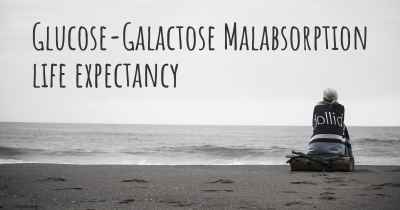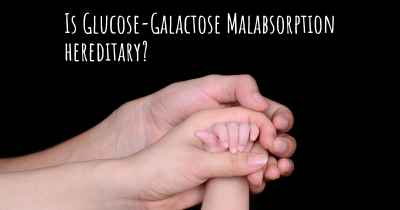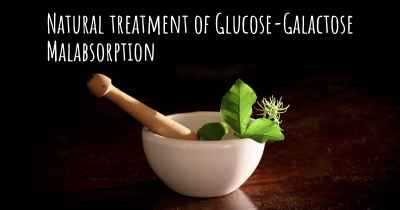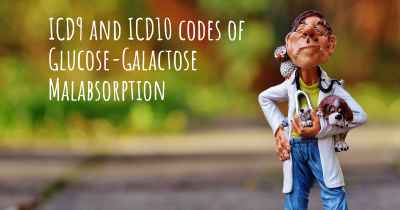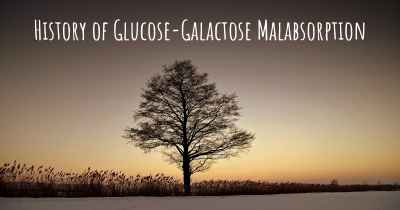Glucose-Galactose Malabsorption diet. Is there a diet which improves the quality of life of people with Glucose-Galactose Malabsorption?
Are you aware of a diet that can improve the quality of life of people with Glucose-Galactose Malabsorption? Is there a diet that is suggested to avoid when having Glucose-Galactose Malabsorption? See if there is a diet that can improve the quality of life of people with Glucose-Galactose Malabsorption, recommended and to avoid food when having Glucose-Galactose Malabsorption
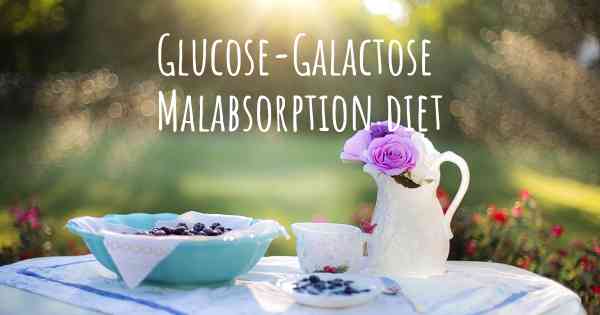
Glucose-Galactose Malabsorption Diet: Improving Quality of Life
Glucose-Galactose Malabsorption (GGM) is a rare genetic disorder that affects the ability of the small intestine to absorb glucose and galactose, two types of sugars found in many common foods. This malabsorption can lead to a range of uncomfortable symptoms such as diarrhea, abdominal pain, bloating, and even dehydration. While there is no cure for GGM, following a specialized diet can significantly improve the quality of life for individuals with this condition.
The Basics of a GGM Diet
A GGM diet focuses on avoiding or limiting foods that contain high levels of glucose and galactose. The primary goal is to reduce the intake of these sugars to a level that the body can tolerate without experiencing symptoms. It is important to note that the severity of GGM can vary among individuals, so it is crucial to work closely with a healthcare professional or registered dietitian to develop a personalized diet plan.
Foods to Avoid
1. Dairy Products: Milk, cheese, yogurt, and other dairy products are high in lactose, a sugar that is broken down into glucose and galactose. Individuals with GGM should avoid or limit their consumption of these products. However, lactose-free alternatives may be suitable for some individuals.
2. Fruits: Certain fruits, such as apples, pears, and grapes, contain high levels of glucose and galactose. These should be avoided or consumed in small quantities. Opting for low-sugar fruits like berries can be a better choice.
3. Sweeteners: Table sugar (sucrose) and other sweeteners like honey, maple syrup, and agave syrup should be avoided as they contain high levels of glucose. Instead, artificial sweeteners or glucose-free alternatives can be used in moderation.
4. Processed Foods: Many processed foods, including baked goods, cereals, and snacks, often contain added sugars or ingredients that are high in glucose and galactose. Reading food labels carefully and choosing products with low or no added sugars is essential.
Foods to Include
1. Protein: Lean meats, fish, poultry, eggs, and plant-based protein sources like tofu and legumes are excellent choices for individuals with GGM. These foods are generally low in glucose and galactose and provide essential nutrients.
2. Vegetables: Most vegetables are naturally low in sugars and can be included in a GGM diet. They are a great source of vitamins, minerals, and fiber, which can support digestive health.
3. Grains: Whole grains like quinoa, brown rice, and oats can be included in moderation as they are generally low in glucose and galactose. However, it is important to check labels for any added sugars or sweeteners.
4. Beverages: Water, herbal teas, and certain low-sugar drinks like unsweetened almond milk or coconut water can be consumed. It is important to avoid sugary beverages, fruit juices, and regular soft drinks.
Meal Planning and Tips
Creating a well-balanced meal plan is crucial for individuals with GGM. Here are some tips to consider:
1. Portion Control: Even though certain foods may be allowed in moderation, it is important to monitor portion sizes to avoid consuming excessive amounts of glucose and galactose.
2. Cooking Techniques: Opt for cooking methods like grilling, baking, steaming, or sautéing instead of frying, as they require less added sugars or fats.
3. Food Substitutions: Explore alternative ingredients and recipes that use glucose-free or low-sugar substitutes. For example, using unsweetened almond milk instead of regular milk in recipes.
4. Regular Monitoring: Keep track of your symptoms and dietary intake to identify any trigger foods or patterns. This information can be helpful when working with a healthcare professional to fine-tune your diet.
Conclusion
A well-planned GGM diet can significantly improve the quality of life for individuals with Glucose-Galactose Malabsorption. By avoiding or limiting foods high in glucose and galactose and focusing on nutrient-dense alternatives, individuals can manage their symptoms and enjoy a more comfortable lifestyle. Remember, it is essential to work closely with a healthcare professional or registered dietitian to develop a personalized diet plan that meets your specific needs.
